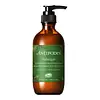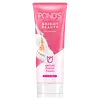What's inside
What's inside
 Key Ingredients
Key Ingredients

 Benefits
Benefits

 Concerns
Concerns

 Ingredients Side-by-side
Ingredients Side-by-side

Water
Skin ConditioningSimmondsia Chinensis Seed Oil
EmollientGlycerin
HumectantGlyceryl Stearate Se
EmulsifyingMacadamia Ternifolia Seed Oil
EmollientPersea Gratissima Oil
Skin ConditioningCetyl Alcohol
EmollientCetearyl Alcohol
EmollientCetearyl Glucoside
EmulsifyingMacropiper Excelsum Leaf Extract
Skin ConditioningDaucus Carota Sativa Seed Oil
EmollientCitrus Paradisi Fruit Extract
Skin ConditioningHelianthus Annuus Seed Oil
EmollientTocopherol
AntioxidantMyristyl Alcohol
EmollientStearyl Alcohol
EmollientSodium Benzoate
MaskingBenzyl Alcohol
PerfumingDehydroacetic Acid
PreservativeParfum
MaskingLinalool
PerfumingLimonene
PerfumingWater, Simmondsia Chinensis Seed Oil, Glycerin, Glyceryl Stearate Se, Macadamia Ternifolia Seed Oil, Persea Gratissima Oil, Cetyl Alcohol, Cetearyl Alcohol, Cetearyl Glucoside, Macropiper Excelsum Leaf Extract, Daucus Carota Sativa Seed Oil, Citrus Paradisi Fruit Extract, Helianthus Annuus Seed Oil, Tocopherol, Myristyl Alcohol, Stearyl Alcohol, Sodium Benzoate, Benzyl Alcohol, Dehydroacetic Acid, Parfum, Linalool, Limonene
Myristic Acid
CleansingGlycerin
HumectantWater
Skin ConditioningPropylene Glycol
HumectantPotassium Hydroxide
BufferingStearic Acid
CleansingLauric Acid
CleansingGlycol Distearate
EmollientDecyl Glucoside
CleansingPalmitic Acid
EmollientHydroxystearic Acid
CleansingGlyceryl Stearate
EmollientSodium Hyaluronate
HumectantSodium Acetylated Hyaluronate
HumectantHydrolyzed Sodium Hyaluronate
Skin ConditioningSodium Hyaluronate Crosspolymer
HumectantRosa Canina Fruit Oil
EmollientNiacinamide
SmoothingPentylene Glycol
Skin ConditioningEthylhexylglycerin
Skin ConditioningArachidic Acid
CleansingPolyquaternium-7
Parfum
MaskingDisodium EDTA
Sodium Benzoate
MaskingPiroctone Olamine
PreservativePhenoxyethanol
PreservativeBenzyl Salicylate
PerfumingCitronellol
PerfumingHexyl Cinnamal
PerfumingLimonene
PerfumingLinalool
PerfumingMyristic Acid, Glycerin, Water, Propylene Glycol, Potassium Hydroxide, Stearic Acid, Lauric Acid, Glycol Distearate, Decyl Glucoside, Palmitic Acid, Hydroxystearic Acid, Glyceryl Stearate, Sodium Hyaluronate, Sodium Acetylated Hyaluronate, Hydrolyzed Sodium Hyaluronate, Sodium Hyaluronate Crosspolymer, Rosa Canina Fruit Oil, Niacinamide, Pentylene Glycol, Ethylhexylglycerin, Arachidic Acid, Polyquaternium-7, Parfum, Disodium EDTA, Sodium Benzoate, Piroctone Olamine, Phenoxyethanol, Benzyl Salicylate, Citronellol, Hexyl Cinnamal, Limonene, Linalool
Ingredients Explained
These ingredients are found in both products.
Ingredients higher up in an ingredient list are typically present in a larger amount.
Glycerin is already naturally found in your skin. It helps moisturize and protect your skin.
A study from 2016 found glycerin to be more effective as a humectant than AHAs and hyaluronic acid.
As a humectant, it helps the skin stay hydrated by pulling moisture to your skin. The low molecular weight of glycerin allows it to pull moisture into the deeper layers of your skin.
Hydrated skin improves your skin barrier; Your skin barrier helps protect against irritants and bacteria.
Glycerin has also been found to have antimicrobial and antiviral properties. Due to these properties, glycerin is often used in wound and burn treatments.
In cosmetics, glycerin is usually derived from plants such as soybean or palm. However, it can also be sourced from animals, such as tallow or animal fat.
This ingredient is organic, colorless, odorless, and non-toxic.
Glycerin is the name for this ingredient in American English. British English uses Glycerol/Glycerine.
Learn more about GlycerinLimonene is a fragrance that adds scent and taste to a formulation.
It's found in the peel oil of citrus fruits and other plants such as lavender and eucalyptus. The scent of limonene is generally described as "sweet citrus".
Limonene acts as an antioxidant, meaning it helps neutralize free radicals.
When exposed to air, oxidized limonene may sensitize the skin. Because of this, limonene is often avoided by people with sensitive skin.
The term 'fragrance' is not regulated in many countries. In many cases, it is up to the brand to define this term. For instance, many brands choose to label themselves as "fragrance-free" because they are not using synthetic fragrances. However, their products may still contain ingredients such as essential oils that are considered a fragrance.
Learn more about LimoneneLinalool is a fragrance and helps add scent to products. It's derived from common plants such as cinnamon, mint, citrus, and lavender.
Like Limonene, this ingredient oxidizes when exposed to air. Oxidized linalool can cause allergies and skin sensitivity.
This ingredient has a scent that is floral, spicy tropical, and citrus-like.
Learn more about LinaloolParfum is a catch-all term for an ingredient or more that is used to give a scent to products.
Also called "fragrance", this ingredient can be a blend of hundreds of chemicals or plant oils. This means every product with "fragrance" or "parfum" in the ingredients list is a different mixture.
For instance, Habanolide is a proprietary trade name for a specific aroma chemical. When used as a fragrance ingredient in cosmetics, most aroma chemicals fall under the broad labeling category of “FRAGRANCE” or “PARFUM” according to EU and US regulations.
The term 'parfum' or 'fragrance' is not regulated in many countries. In many cases, it is up to the brand to define this term.
For instance, many brands choose to label themselves as "fragrance-free" because they are not using synthetic fragrances. However, their products may still contain ingredients such as essential oils that are considered a fragrance by INCI standards.
One example is Calendula flower extract. Calendula is an essential oil that still imparts a scent or 'fragrance'.
Depending on the blend, the ingredients in the mixture can cause allergies and sensitivities on the skin. Some ingredients that are known EU allergens include linalool and citronellol.
Parfum can also be used to mask or cover an unpleasant scent.
The bottom line is: not all fragrances/parfum/ingredients are created equally. If you are worried about fragrances, we recommend taking a closer look at an ingredient. And of course, we always recommend speaking with a professional.
Learn more about ParfumSodium Benzoate is a preservative. It's used in both cosmetic and food products to inhibit the growth of mold and bacteria. It is typically produced synthetically.
Both the US FDA and EU Health Committee have approved the use of sodium benzoate. In the US, levels of 0.1% (of the total product) are allowed.
Sodium benzoate works as a preservative by inhibiting the growth of bacteria inside of cells. It prevents the cell from fermenting a type of sugar using an enzyme called phosphofructokinase.
It is the salt of benzoic acid. Foods containing sodium benzoate include soda, salad dressings, condiments, fruit juices, wines, and snack foods.
Studies for using ascorbic acid and sodium benzoate in cosmetics are lacking, especially in skincare routines with multiple steps.
We always recommend speaking with a professional, such as a dermatologist, if you have any concerns.
Learn more about Sodium BenzoateWater. It's the most common cosmetic ingredient of all. You'll usually see it at the top of ingredient lists, meaning that it makes up the largest part of the product.
So why is it so popular? Water most often acts as a solvent - this means that it helps dissolve other ingredients into the formulation.
You'll also recognize water as that liquid we all need to stay alive. If you see this, drink a glass of water. Stay hydrated!
Learn more about Water